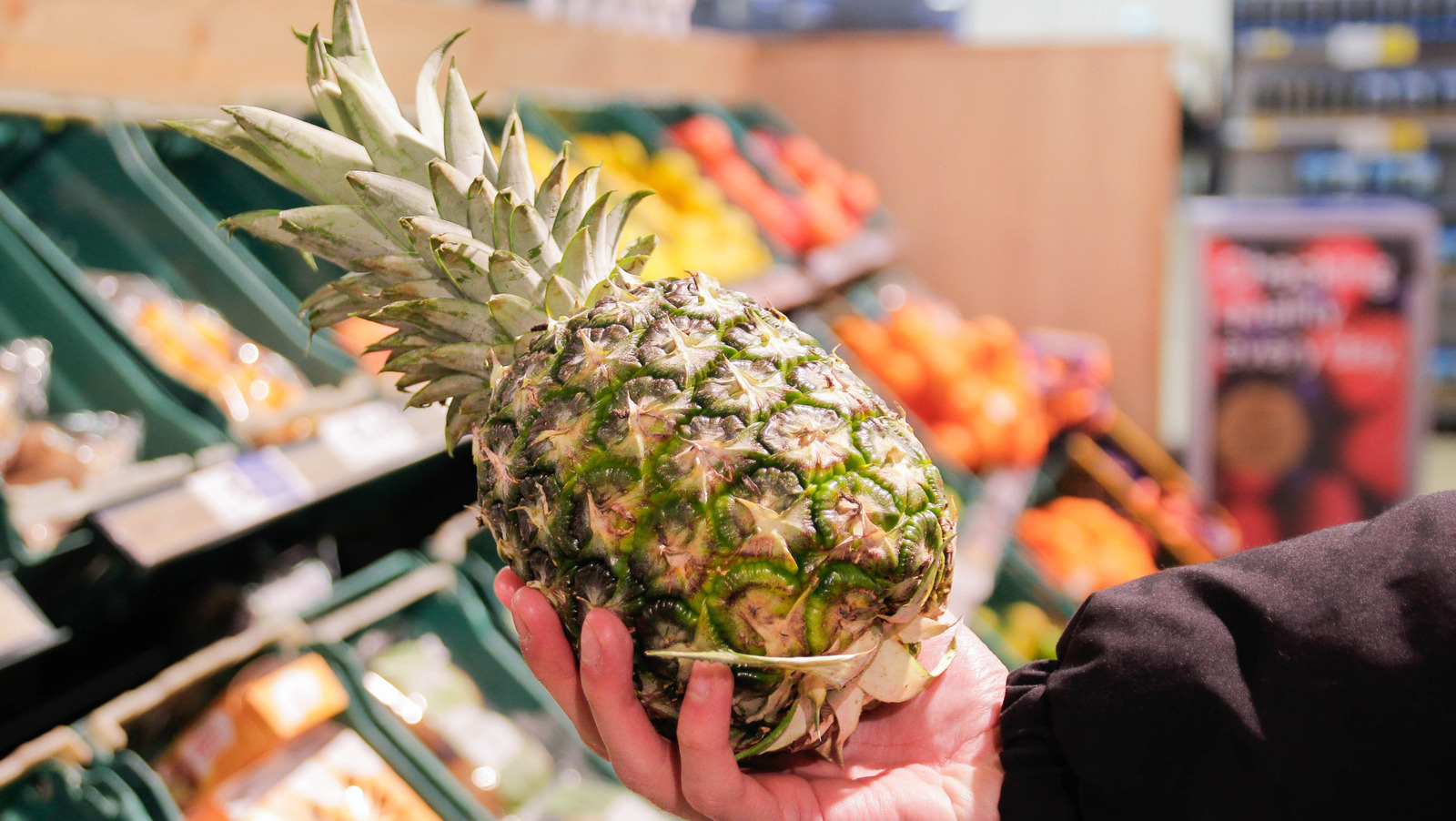Sweet, sour, tangy, tropical — fresh pineapple is a joy on its own, and it can add a unique twist to salsas, smoothies, pizza (we’re believers), and more. While it’s simple to pick up a fresh pineapple from the produce section at the grocery store, you can create an endless supply of the tropical fruit (called a bromeliad, if we’re getting technical) at home, even if you don’t live in an area where the weather stays toasty year-round. All you need to get started is the top of a single store-bought, well-ripened pineapple with healthy-looking leaves.
To get started, you’ll need to use a super-sharp knife to cut off the crown (top) of the pineapple. It’s key to make sure that none of the pineapple’s flesh remains — if there are any bits still attached to the crown, it can cause your plant to rot before it gets a chance to grow. You may need to remove a few of the bottom leaves to ensure that the pineapple’s flesh is completely removed — err on the side of caution here. Let the crown dry out for a few days, and check one more time to ensure that no flesh is remaining before you begin the planting process. Once you’ve got a fully dried, flesh-free crown, you’re ready to begin creating a pineapple from scratch.
Helping your home-grown pineapple plant take root
After your pineapple crown is a bit dry and totally flesh-free, it’s time to get planting. You’ve got two options: planting in soil, or helping your plant develop roots in water before planting in soil (a water bottle fashioned into a planter can work well for this). If you choose the latter, place the end of your crown into a jar of water, and be sure to change the water every two to three days to prevent bacterial issues.
Whether you help your plant root by using the water method or you plant directly in soil, you should start to see roots growing within about three weeks. At this point, it’s time to transfer your plant to a pot. You’ll want to choose an option that drains well, as waterlogged pineapple plants won’t thrive — pineapples are used to growing in tropical climates, and don’t need a ton of watering to grow. If you have drier air in your home, use a humidifier or keep a plant mister on hand to give leaves a spritz every now and then, but again — don’t overdo it.
Pineapple plants don’t have super-deep root systems, so it’s key to use a heavy soil to help them stay put (mixing standard potting soil with sand can help). You may want to place mulch on top of the potting soil to provide some extra weight. Be sure you’re only burying the actual crown of the plant in the soil — if you bury the leaves, they’ll rot.
Caring for and harvesting an at-home pineapple plant
Unless you live in a warmer area, you’ll want to keep your pineapple plant inside. Your plant will thrive in a temperature range of 65 to 95 degrees Fahrenheit, and may die if temperatures drop below 50 degrees Fahrenheit. You can certainly move your pineapple plant outdoors in the summer, but be sure to bring it inside if it’s likely to be a chilly night. Sunlight matters too — your plant should get six to eight hours of indirect light per day. If you live in a cloudy climate or don’t have a window that gets enough sun, you might want to use a grow light to increase the chances of an eventual pineapple harvest.
Patience is key when it comes to getting fruit from your self-made pineapple plant — it can take anywhere from 16 months to three years to get your first pineapple. You’ll know that you’ve almost made it to the finish line when bracts — brightly colored (typically pink and purple), flower-like components of the plant — start to appear. Once you see blooming bracts, you can expect to have a fully-formed, ready-to-harvest pineapple within about six months.
When it’s time to harvest, caution is key. Wear ultra-thick gloves, use a sharp knife, and cut away from yourself. Slice into your pineapple like a pro, enjoy a bite (or six), and put your new pineapple crown to good use growing a brand-new plant.







